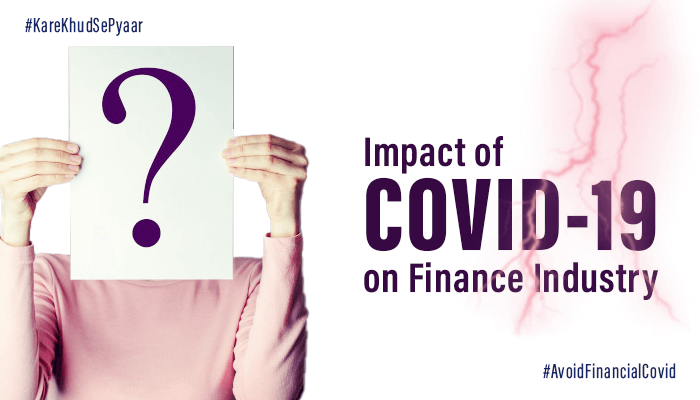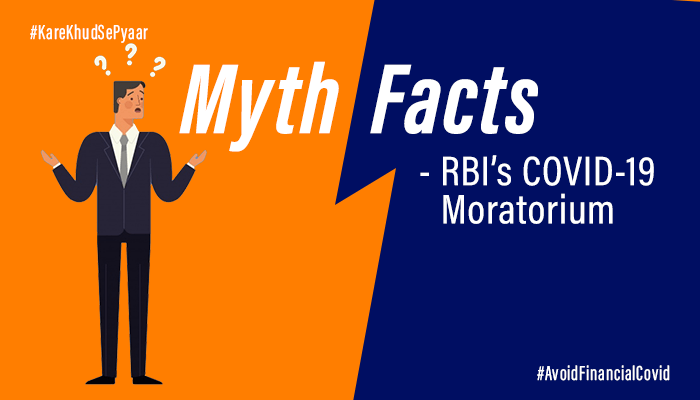

Stay Up-to-Date with Our
Blogs & Articles
Loan to Value Ratio: A Guide to Smarter Loan Planning

Sometimes it's difficult to plan your money well. There are many things to think about, and you might not remember all of them when you make plans or decisions. This is especially true when you need money for something specific, like buying a house or a car or for your business.
One common way to get money is by taking a loan. But even applying for a loan requires planning. You have to decide how much money you need, how much you can pay back each month, which lender to choose, and if you need to provide something valuable as security.
To help you plan better when getting a secured loan, you can use something called the loan to value (LTV) ratio. It's a tool that makes your planning easier.
What is the loan to value ratio?

LTV ratio reveals the loan amount you can borrow
The loan to value ratio or 'LTV ratio' denotes the amount you can be granted for a secured loan based on the value of the asset you would pledge as collateral. This ratio is always expressed in percentage and it is used by banks and financial institutions to decide the loan amount to be granted.
As a borrower or loan applicant, calculating the LTV ratio while planning for your loan will help you get a fair idea of the amount you are likely to be granted by the lender. This way you can make preparations for the remainder of the needed amount and also plan a good repayment structure.
How to calculate LTV ratio?
The LTV ratio is calculated using a simple formula. You will need certain basic financial details to substitute in the formula. The LTV ratio formula is as follows:
Amount of secured loan / Market value of asset * 100
So, if you are applying for a home loan, you will divide the amount you hope to get as a loan with the price of the property you are looking to buy.
For example, if you consider the value of a property to be Rs.20 lakh and you are applying for a loan of Rs.15 lakh, your mortgage LTV ratio would be:
15,00,000 / 20,00,000 * 100 = 75%
Your LTV ratio in this instance would amount to 75%.
In case you don't want to manually calculate the LTV ratio, there are several online loan to value ratio calculators that you can use to calculate the same.
What is a good loan to value ratio?
The value of LTV ratio differs from institution to institution. As a standard, most institutions consider anywhere below 80% to be a good ratio. Now, this doesn't mean that an application for a higher LTV ratio will be rejected by the lender. If you apply for a loan with an LTV ratio higher than 80%, chances are high that the lending institution will charge you a higher rate of interest.

When calculating for yourself, just remember that the lower the LTV ratio, the better it is. When it comes to mortgage LTV ratio, RBI has set some clear guidelines about how much loan a lending institution can approve based on the LTV ratio:
|
Loan Amount |
LTV Ratio |
|
Up to Rs 30 lakh |
90% of the property value |
|
Between Rs 30 lakh & Rs 75 lakh |
80% of the property value |
|
More than Rs 75 lakh |
75% of the property value |
This means that, apart from the amount granted by the lender, the remainder has to be arranged by you personally. It is also, however, important to note that apart from the LTV ratio of a mortgage loan, the lender also considers factors like your credit standing, the property of choice, your age, etc. before deciding on the loan amount and mortgage interest rates.
Takeaway
LTV ratio or loan to value ratio is the percentage value used by lending institutions to finalise the loan amount and interest rates. It is calculated by dividing the loan amount by the value of the asset being pledged as collateral and helps you plan for the repayment EMIs. In the instance of a home loan, a good mortgage LTV ratio is thought to be under 80% and the remainder of the amount needed to pay for the home has to be arranged by you.
Here at IIFL Home Loans, we offer you home loans at affordable interest rates and with customisable repayment schedules so you can make your dream of owning a home a reality. Our 100% online application process and quick approval ensure a hassle-free experience. IIFL Home Loans Shakthi Loan Against Property is an initiative aimed at helping you leverage your assets to finance your needs. Learn more about services by paying a quick visit to our website and applying now for a smoother financial experience with IIFL Home Loans.
FAQs:
-
1. What is LTV?
LTV or loan to value ratio is the proportion of the amount borrowed in a secured loan to the value of the asset you pledge as collateral. So, if you are going for IIFL Home Loans Shakthi Loan Against Property, LTV ratio would be the amount of loan divided by the current value of the property you will borrow the loan against.
-
2. What does LTV mean in a mortgage?
In relation to mortgage, LTV ratio means the amount of the value of your property of choice that the loan will finance. For example, if your mortgage loan to value ratio is 75%, it means that the loan will give you an amount which is 75% of the price of your property of choice. The remaining 25% will have to be arranged by you.
-
3. How is LTV ratio calculated?
LTV ratio is calculated using a simple formula. The LTV ratio formula is:
Amount of secured loan / Market value of asset * 100
If you find it difficult to compute your LTV yourself using this formula, there are several LTV calculators available online that can help you easily figure out your mortgage LTV ratio.
-
4. Is a high loan to value ratio good?
When it comes to taking a loan, lending institutions generally prefer that you have a lower LTV ratio. The lower the better. However, this doesn't mean that a high LTV loan won't be approved. If you have good credit standing and good historical relations with your lender, the lender may likely approve the high LTV ratio at a higher rate of interest.
-
5. What is a good LTV ratio?
An LTV ratio of 80% or lower than that is generally considered good by most lending institutions. But an important point to note is that the LTV is not the only factor lenders consider while approving a loan. Aspects like your age, payback capability, existing debt, your credit score, etc. also play a major role.
Tags
Latest Blogs
Home Loans

How to Claim Tax Benefits on a Second Home Loan
Read More
IIFL Home Loans | Aug 04 6:38 AM
Home Loans

How to Claim Tax Benefits on a Second Home Loan
Read More
IIFL Home Loans | Aug 04 6:38 AM
Home Loans

How to Claim Tax Benefits on a Second Home Loan
Read More
IIFL Home Loans | Aug 04 6:38 AM
Home Loans

How to Claim Tax Benefits on a Second Home Loan
Read More
IIFL Home Loans | Aug 04 6:38 AM
Home Loans

Home Loans

Home Loans

Home Loans

Home Loans

Guidelines for Affordable Home Loan Balance Transfer
Read More
IIFL Home Loans | Jul 12 6:18 PM
Home Loans

Guidelines for Affordable Home Loan Balance Transfer
Read More
IIFL Home Loans | Jul 12 6:18 PM
Home Loans

Guidelines for Affordable Home Loan Balance Transfer
Read More
IIFL Home Loans | Jul 12 6:18 PM
Home Loans

Guidelines for Affordable Home Loan Balance Transfer
Read More
IIFL Home Loans | Jul 12 6:18 PM
Home Loans

Home Loans

Home Loans

Home Loans

Home Loans

Home Loans

Home Loans

Home Loans

Home Loans

How to Avail Loan against Property for Business
Read More
IIFL Home Loans | Jul 06 7:14 AM
Home Loans

How to Avail Loan against Property for Business
Read More
IIFL Home Loans | Jul 06 7:14 AM
Home Loans

How to Avail Loan against Property for Business
Read More
IIFL Home Loans | Jul 06 7:14 AM
Home Loans

How to Avail Loan against Property for Business
Read More
IIFL Home Loans | Jul 06 7:14 AM
Home Loans

Home Loans

Home Loans

Home Loans

Home Loans

Home Loans

Home Loans

Home Loans

Home Loans

Home Loans

Home Loans

Home Loans

Home Loans

Home Loans

Home Loans

Home Loans

Home Loans

Home Loans

Home Loans

Home Loans

Home Loans

Home Loans

Home Loans

Home Loans

Home Loans

Home Loans

Home Loans

Home Loans

Home Loans

Home Loans

Home Loans

Home Loans

Home Loans

Home Loans

Home Loans

Home Loans

Home Loans

Home Loans

Home Loans

Home Loans

Home Loans

Home Loans

Home Loans

Home Loans

Home Loans

Home Loans

Home Loans

Home Loans

Home Loans

Home Loans

Home Loans

Home Loans

Home Loans

Home Loans

Home Loans

Home Loans

Home Loans

Home Loans

Home Loans

What Is a Pre-approved Home Loan and Its Benefits
Read More
IIFL Home Loans | May 15 5:28 AM
Home Loans

What Is a Pre-approved Home Loan and Its Benefits
Read More
IIFL Home Loans | May 15 5:28 AM
Home Loans

What Is a Pre-approved Home Loan and Its Benefits
Read More
IIFL Home Loans | May 15 5:28 AM
Home Loans

What Is a Pre-approved Home Loan and Its Benefits
Read More
IIFL Home Loans | May 15 5:28 AM
Home Loans

What Is a Pre-approved Home Loan and Its Benefits
Read More
IIFL Home Loans | May 15 5:28 AM
Home Loans

Home Loans

Home Loans

Home Loans

Home Loans

Key Factors Affecting Your Home Loan Amount Eligibility
Read More
IIFL Home Loans | May 12 11:58 AM
Home Loans

Key Factors Affecting Your Home Loan Amount Eligibility
Read More
IIFL Home Loans | May 12 11:58 AM
Home Loans

Key Factors Affecting Your Home Loan Amount Eligibility
Read More
IIFL Home Loans | May 12 11:58 AM
Home Loans

Key Factors Affecting Your Home Loan Amount Eligibility
Read More
IIFL Home Loans | May 12 11:58 AM
Home Loans

Key Factors Affecting Your Home Loan Amount Eligibility
Read More
IIFL Home Loans | May 12 11:58 AM
Home Loans

Home Loans

Home Loans

Home Loans

Home Loans

Home Loans

Home Loans

Home Loans

Home Loans

Home Loans

Home Loans

Home Loans

Home Loans

Home Loans

Home Loans

Home Loans

Home Loans

Home Loans

Home Loans

Home Loans

Home Loans

Home Loans

Home Loans

Home Loans

Home Loans

Home Loans

Home Loans

Home Loans

Affordable Home Loans In India And IIFL Home Loans
Read More
IIFL Home Loans | Nov 23 4:12 AM
Home Loans

Affordable Home Loans In India And IIFL Home Loans
Read More
IIFL Home Loans | Nov 23 4:12 AM
Home Loans

Affordable Home Loans In India And IIFL Home Loans
Read More
IIFL Home Loans | Nov 23 4:12 AM
Home Loans

Home Loans

Home Loans

Home Loans

Home Loans

Home Loans

Home Loans

Home Loans

NCD Vs FD: What Is The Difference Between The Two?
Read More
IIFL Home Loans | Nov 23 4:12 AM
Home Loans

NCD Vs FD: What Is The Difference Between The Two?
Read More
IIFL Home Loans | Nov 23 4:12 AM
Home Loans

NCD Vs FD: What Is The Difference Between The Two?
Read More
IIFL Home Loans | Nov 23 4:12 AM
Home Loans

Home Loans

Home Loans

7 Expert Tips For First-Time Home Loan borrowers
Read More
IIFL Home Loans | Nov 02 9:30 AM
Home Loans

Home Loans

Home Loan Balance Transfer - Step By Step Guide
Read More
IIFL Home Loans | Nov 02 9:30 AM
Home Loans

Home Loans

Home Loans

Steps To Close A Home Loan Without Complications
Read More
IIFL Home Loans | Aug 24 9:48 AM
Home Loans

Frequently Asked Questions: Post RBIs Moratorium On Loan
Read More
IIFL Home Loans | Sep 05 12:15 PM
Home Loans

Home Loans
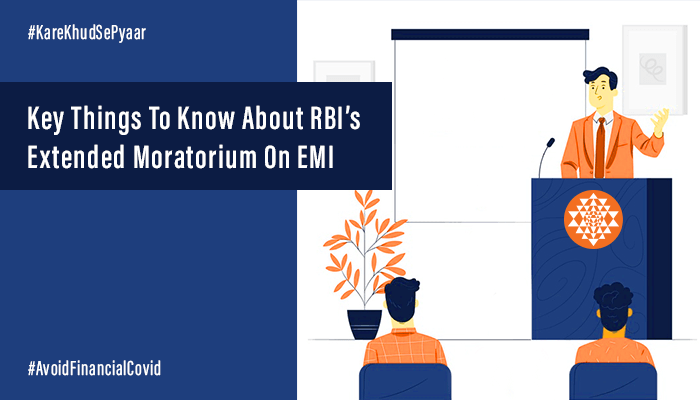
Home Loans

Home Loans
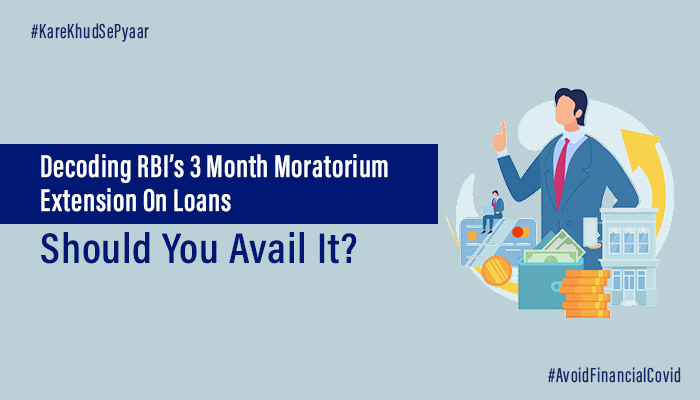
Home Loans

Home Loans

Home Loans

Home Loans

Home Loans

Home Loans

Home Loans

Home Loans

Home Loans

Home Loans

Home Loans

Home Loans

Best Tips To Get Lowest Home Loan Interest Rates
Read More
IIFL Home Loans | Oct 03 12:15 PM
Home Loans

Best Tips To Get Lowest Home Loan Interest Rates
Read More
IIFL Home Loans | Oct 03 12:15 PM
Home Loans

Best Tips To Get Lowest Home Loan Interest Rates
Read More
IIFL Home Loans | Oct 03 12:15 PM
Home Loans

Best Tips To Get Lowest Home Loan Interest Rates
Read More
IIFL Home Loans | Oct 03 12:15 PM
Home Loans

Best Tips To Get Lowest Home Loan Interest Rates
Read More
IIFL Home Loans | Oct 03 12:15 PM
Home Loans

Best Tips To Get Lowest Home Loan Interest Rates
Read More
IIFL Home Loans | Oct 03 12:15 PM
Home Loans

Success Tips For Young First-Time Home Buyers
Read More
IIFL Home Loans | Oct 03 11:45 AM
Home Loans

Success Tips For Young First-Time Home Buyers
Read More
IIFL Home Loans | Oct 03 11:45 AM
Home Loans

Success Tips For Young First-Time Home Buyers
Read More
IIFL Home Loans | Oct 03 11:45 AM
Home Loans

Success Tips For Young First-Time Home Buyers
Read More
IIFL Home Loans | Oct 03 11:45 AM
Home Loans
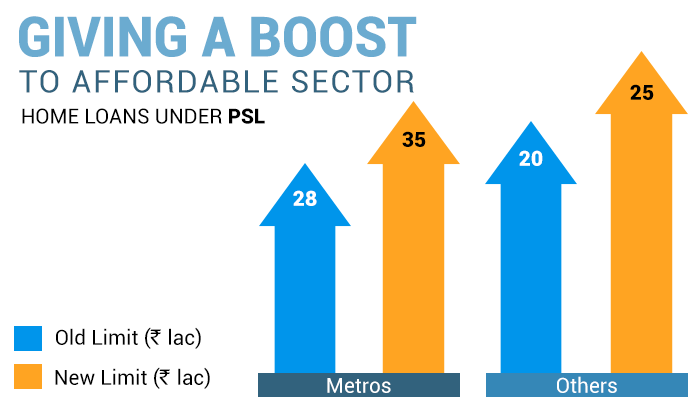
Home Loans

Home Loans

Home Loans

Home Loans

Home Loans

How To Claim Tax Benefits On Joint Home Loans?
Read More
IIFL Home Loans | May 21 2:45 PM
Home Loans

How To Claim Tax Benefits On Joint Home Loans?
Read More
IIFL Home Loans | May 21 2:45 PM
Home Loans

How To Claim Tax Benefits On Joint Home Loans?
Read More
IIFL Home Loans | May 21 2:45 PM
Home Loans

How To Claim Tax Benefits On Joint Home Loans?
Read More
IIFL Home Loans | May 21 2:45 PM
Home Loans

Home Loans

Home Loans

Home Loans

Home Loans

Home Loans
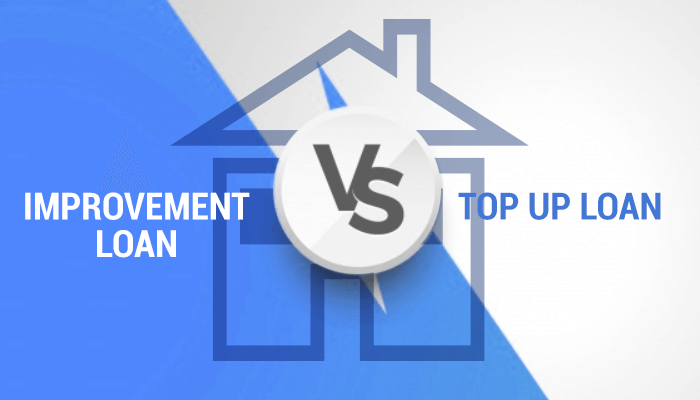
Home Loans

Home Loans

Home Loans

Home Loans

Home Loans

5 Things to Consider Before Refinancing a Home Loan
Read More
IIFL Home Loans | Feb 21 3:30 PM
Home Loans

5 Things to Consider Before Refinancing a Home Loan
Read More
IIFL Home Loans | Feb 21 3:30 PM
Home Loans

5 Things to Consider Before Refinancing a Home Loan
Read More
IIFL Home Loans | Feb 21 3:30 PM
Home Loans

5 Things to Consider Before Refinancing a Home Loan
Read More
IIFL Home Loans | Feb 21 3:30 PM
Home Loans

Home Loans

Home Loans

Home Loans

Home Loans

Home Loans

Home Loans

SIPs Can Help You to Pay Your Home Loan Interest
Read More
IIFL Home Loans | Nov 15 1:00 PM
Home Loans

SIPs Can Help You to Pay Your Home Loan Interest
Read More
IIFL Home Loans | Nov 15 1:00 PM
Home Loans

SIPs Can Help You to Pay Your Home Loan Interest
Read More
IIFL Home Loans | Nov 15 1:00 PM
Home Loans

SIPs Can Help You to Pay Your Home Loan Interest
Read More
IIFL Home Loans | Nov 15 1:00 PM
Home Loans

SIPs Can Help You to Pay Your Home Loan Interest
Read More
IIFL Home Loans | Nov 15 1:00 PM
Home Loans

SIPs Can Help You to Pay Your Home Loan Interest
Read More
IIFL Home Loans | Nov 15 1:00 PM
Home Loans

Home Loans

Home Loans

Home Loans

Home Loans

Home Loans

What are the Best Real Estate Areas in Bangalore?
Read More
IIFL Home Loans | Jul 07 2:30 PM
Home Loans

Home Loans

Home Loans

Home Loans

Home Loans

Home Loans

Policies Increase the Efficiency of the Work Process!
Read More
IIFL Home Loans | Jun 01 12:45 PM
Home Loans

Policies Increase the Efficiency of the Work Process!
Read More
IIFL Home Loans | Jun 01 12:45 PM
Home Loans

Policies Increase the Efficiency of the Work Process!
Read More
IIFL Home Loans | Jun 01 12:45 PM
Home Loans
Tax Planning

Home Loans
Tax Planning

Home Loans

What Are The Benefits Of Buying A House in 20s
Read More
IIFL Home Loans | Apr 06 5:45 PM
Home Loans

What Are The Benefits Of Buying A House in 20s
Read More
IIFL Home Loans | Apr 06 5:45 PM
Home Loans

What Are The Benefits Of Buying A House in 20s
Read More
IIFL Home Loans | Apr 06 5:45 PM
Home Loans

What Are The Benefits Of Buying A House in 20s
Read More
IIFL Home Loans | Apr 06 5:45 PM
Home Loans
Tax Planning

Home Loans
Tax Planning

Home Loans
Tax Planning

Home Loans

Home Loans

Home Loans

Home Loans

Home Loans

Home Loans

Home Loans

Home Loans

Home Loans

Home Loans

Calculate Your Eligibility With Home Loan Calculator
Read More
IIFL Home Loans | Feb 07 11:00 AM
Home Loans

Calculate Your Eligibility With Home Loan Calculator
Read More
IIFL Home Loans | Feb 07 11:00 AM
Home Loans

Calculate Your Eligibility With Home Loan Calculator
Read More
IIFL Home Loans | Feb 07 11:00 AM
Home Loans

Calculate Your Eligibility With Home Loan Calculator
Read More
IIFL Home Loans | Feb 07 11:00 AM
Home Loans

Home Loans

Home Loans

Home Loans

Home Loans

Home Loans

Home Loans

Home Loans

Home Loans

Home Loans

Home Loans

Home Loans

Home Loans

Home Loans

Home Loans

Home Loans

Home Loans

Home Loans

Hacked!!! Why Indian Sailors Get a Loan Rejection?
Read More
IIFL Home Loans | Oct 21 2:15 PM
Home Loans

Hacked!!! Why Indian Sailors Get a Loan Rejection?
Read More
IIFL Home Loans | Oct 21 2:15 PM
Home Loans
Pradhan Mantri Yojana

Home Loans
Pradhan Mantri Yojana

Home Loans
Pradhan Mantri Yojana

Home Loans
Pradhan Mantri Yojana

Home Loans
Pradhan Mantri Yojana

Home Loans
Pradhan Mantri Yojana

Home Loans

10 Things You Must Know About Home Loan EMI Calculator
Read More
IIFL Home Loans | Oct 05 12:15 PM
Home Loans

10 Things You Must Know About Home Loan EMI Calculator
Read More
IIFL Home Loans | Oct 05 12:15 PM
Home Loans

6 Things To Consider While Choosing Your Home
Read More
IIFL Home Loans | Oct 01 11:45 AM
Home Loans

6 Things To Consider While Choosing Your Home
Read More
IIFL Home Loans | Oct 01 11:45 AM
Home Loans

6 Things To Consider While Choosing Your Home
Read More
IIFL Home Loans | Oct 01 11:45 AM
Home Loans

6 Things To Consider While Choosing Your Home
Read More
IIFL Home Loans | Oct 01 11:45 AM
Home Loans

6 Things To Consider While Choosing Your Home
Read More
IIFL Home Loans | Oct 01 11:45 AM
Home Loans

6 Things To Consider While Choosing Your Home
Read More
IIFL Home Loans | Oct 01 11:45 AM
Home Loans

6 Things To Consider While Choosing Your Home
Read More
IIFL Home Loans | Oct 01 11:45 AM
Home Loans

6 Things To Consider While Choosing Your Home
Read More
IIFL Home Loans | Oct 01 11:45 AM
Home Loans

Home Loans

Home Loans

Home Loans

Home Loans

Home Loans

Home Loans

Home Loans

Home Loans

Home Loans

Here are 6 ways to Save Money on Your Home Loan
Read More
IIFL Home Loans | Aug 05 12:15 PM
Home Loans

Here are 6 ways to Save Money on Your Home Loan
Read More
IIFL Home Loans | Aug 05 12:15 PM
Home Loans

5 Hacks for Improving the Home Loan Eligibility
Read More
IIFL Home Loans | Jul 18 3:45 PM
Home Loans

5 Hacks for Improving the Home Loan Eligibility
Read More
IIFL Home Loans | Jul 18 3:45 PM
Home Loans

Home Loans

Home Loans

Home Loans

Home Loans

Whether taking home loan is a wise decision or not?
Read More
IIFL Home Loans | Apr 14 2:15 PM
Home Loans

Whether taking home loan is a wise decision or not?
Read More
IIFL Home Loans | Apr 14 2:15 PM
Home Loans

Whether taking home loan is a wise decision or not?
Read More
IIFL Home Loans | Apr 14 2:15 PM
Home Loans

Whether taking home loan is a wise decision or not?
Read More
IIFL Home Loans | Apr 14 2:15 PM
Home Loans

Yes, Every Home Loan Needs Insurance. Here Why
Read More
IIFL Home Loans | Apr 14 11:30 AM
Home Loans

Yes, Every Home Loan Needs Insurance. Here Why
Read More
IIFL Home Loans | Apr 14 11:30 AM
Home Loans

Yes, Every Home Loan Needs Insurance. Here Why
Read More
IIFL Home Loans | Apr 14 11:30 AM
Home Loans

Yes, Every Home Loan Needs Insurance. Here Why
Read More
IIFL Home Loans | Apr 14 11:30 AM

Prelude to Building Green - IIFL Home Loan's Guide to Sustainable Affordable Housing
Download reportMost Read Blogs
Home Loans

10 Things You Must Know About Home Loan EMI Calculator
Read More
IIFL Home Loans | Oct 05 12:15 PM
Home Loans

5 Hacks for Improving the Home Loan Eligibility
Read More
IIFL Home Loans | Jul 18 3:45 PM
Home Loans

5 Things to Consider Before Refinancing a Home Loan
Read More
IIFL Home Loans | Feb 21 3:30 PM
Home Loans

Home Loans

6 Things To Consider While Choosing Your Home
Read More
IIFL Home Loans | Oct 01 11:45 AM
Home Loans

Home Loans

7 Expert Tips For First-Time Home Loan borrowers
Read More
IIFL Home Loans | Nov 02 9:30 AM
Home Loans

Home Loans

Home Loans

Affordable Home Loans In India And IIFL Home Loans
Read More
IIFL Home Loans | Nov 23 4:12 AM
Home Loans

Home Loans

Home Loans

Best Tips To Get Lowest Home Loan Interest Rates
Read More
IIFL Home Loans | Oct 03 12:15 PM
Home Loans

Calculate Your Eligibility With Home Loan Calculator
Read More
IIFL Home Loans | Feb 07 11:00 AM
Home Loans

Home Loans

Home Loans

Home Loans

Home Loans

Home Loans

Home Loans

Home Loans

Home Loans

Home Loans

Home Loans

Home Loans

Frequently Asked Questions: Post RBIs Moratorium On Loan
Read More
IIFL Home Loans | Sep 05 12:15 PM
Home Loans

Guidelines for Affordable Home Loan Balance Transfer
Read More
IIFL Home Loans | Jul 12 6:18 PM
Home Loans

Hacked!!! Why Indian Sailors Get a Loan Rejection?
Read More
IIFL Home Loans | Oct 21 2:15 PM
Home Loans

Home Loans

Home Loans

Here are 6 ways to Save Money on Your Home Loan
Read More
IIFL Home Loans | Aug 05 12:15 PM
Home Loans

Home Loan Balance Transfer - Step By Step Guide
Read More
IIFL Home Loans | Nov 02 9:30 AM
Home Loans

Home Loans

Home Loans

Home Loans

Home Loans

Home Loans

Home Loans

Home Loans

How to Avail Loan against Property for Business
Read More
IIFL Home Loans | Jul 06 7:14 AM
Home Loans

Home Loans

How to Claim Tax Benefits on a Second Home Loan
Read More
IIFL Home Loans | Aug 04 6:38 AM
Home Loans

How To Claim Tax Benefits On Joint Home Loans?
Read More
IIFL Home Loans | May 21 2:45 PM
Home Loans

Home Loans

Home Loans

Home Loans

Home Loans

Home Loans

Home Loans

Home Loans

Home Loans

Home Loans

Home Loans

Home Loans

Home Loans

Key Factors Affecting Your Home Loan Amount Eligibility
Read More
IIFL Home Loans | May 12 11:58 AM
Home Loans

Home Loans

Home Loans

Home Loans

Home Loans

NCD Vs FD: What Is The Difference Between The Two?
Read More
IIFL Home Loans | Nov 23 4:12 AM
Home Loans

Home Loans

Home Loans

Home Loans

Policies Increase the Efficiency of the Work Process!
Read More
IIFL Home Loans | Jun 01 12:45 PM
Home Loans

Home Loans

Home Loans

Home Loans

Home Loans

Home Loans

SIPs Can Help You to Pay Your Home Loan Interest
Read More
IIFL Home Loans | Nov 15 1:00 PM
Home Loans

Steps To Close A Home Loan Without Complications
Read More
IIFL Home Loans | Aug 24 9:48 AM
Home Loans

Home Loans

Success Tips For Young First-Time Home Buyers
Read More
IIFL Home Loans | Oct 03 11:45 AM
Home Loans

Home Loans

Home Loans

Home Loans

Home Loans

What Are The Benefits Of Buying A House in 20s
Read More
IIFL Home Loans | Apr 06 5:45 PM
Home Loans

What are the Best Real Estate Areas in Bangalore?
Read More
IIFL Home Loans | Jul 07 2:30 PM
Home Loans

What Is a Pre-approved Home Loan and Its Benefits
Read More
IIFL Home Loans | May 15 5:28 AM
Home Loans

Home Loans

Home Loans

Whether taking home loan is a wise decision or not?
Read More
IIFL Home Loans | Apr 14 2:15 PM
Home Loans

Yes, Every Home Loan Needs Insurance. Here Why
Read More
IIFL Home Loans | Apr 14 11:30 AM
Home Loans

Disclaimer: The information contained in this post is for general information purposes only. IIFL Home Finance Limited (including its associates and affiliates) ("the Company") assumes no liability or responsibility for any errors or omissions in the contents of this post and under no circumstances shall the Company be liable for any damage, loss, injury or disappointment, etc. suffered by any reader. All information in this post is provided "as is", with no guarantee of completeness, accuracy, timeliness, or of the results, etc. obtained from the use of this information, and without warranty of any kind, express or implied, including, but not limited to warranties of performance, merchantability, and fitness for a particular purpose. Given the changing nature of laws, rules, and regulations, there may be delays, omissions, or inaccuracies in the information contained in this post. The information on this post is provided with the understanding that the Company is not herein engaged in rendering legal, accounting, tax, or other professional advice and services. As such, it should not be used as a substitute for consultation with professional accounting, tax, legal or other competent advisers. This post may contain views and opinions which are those of the authors and do not necessarily reflect the official policy or position of any other agency or organization. This post may also contain links to external websites that are not provided or maintained by or in any way affiliated with the Company and the Company does not guarantee the accuracy, relevance, timeliness, or completeness of any information on these external websites. Any/ all (Home/ Loan Against Property/ Secured Business Loan/ Balance Transfer/ Home Improvement Loan/ NRI Home Loan/ Home Loan for Uniformed Services) loan product specifications and information that may be stated in this post are subject to change from time to time, readers are advised to reach out to the Company for current specifications of the said (Home/ Loan Against Property/ Secured Business Loan/ Balance Transfer/ Home Improvement Loan/ NRI Home Loan/ Home Loan for Uniformed Services) loan.
 Login
Login


 11 views
11 views
 0 Likes
0 Likes 






